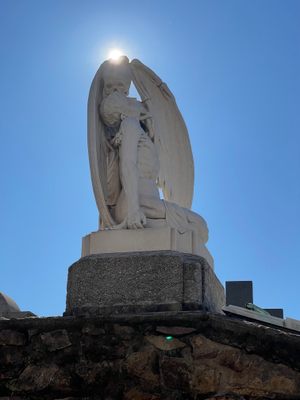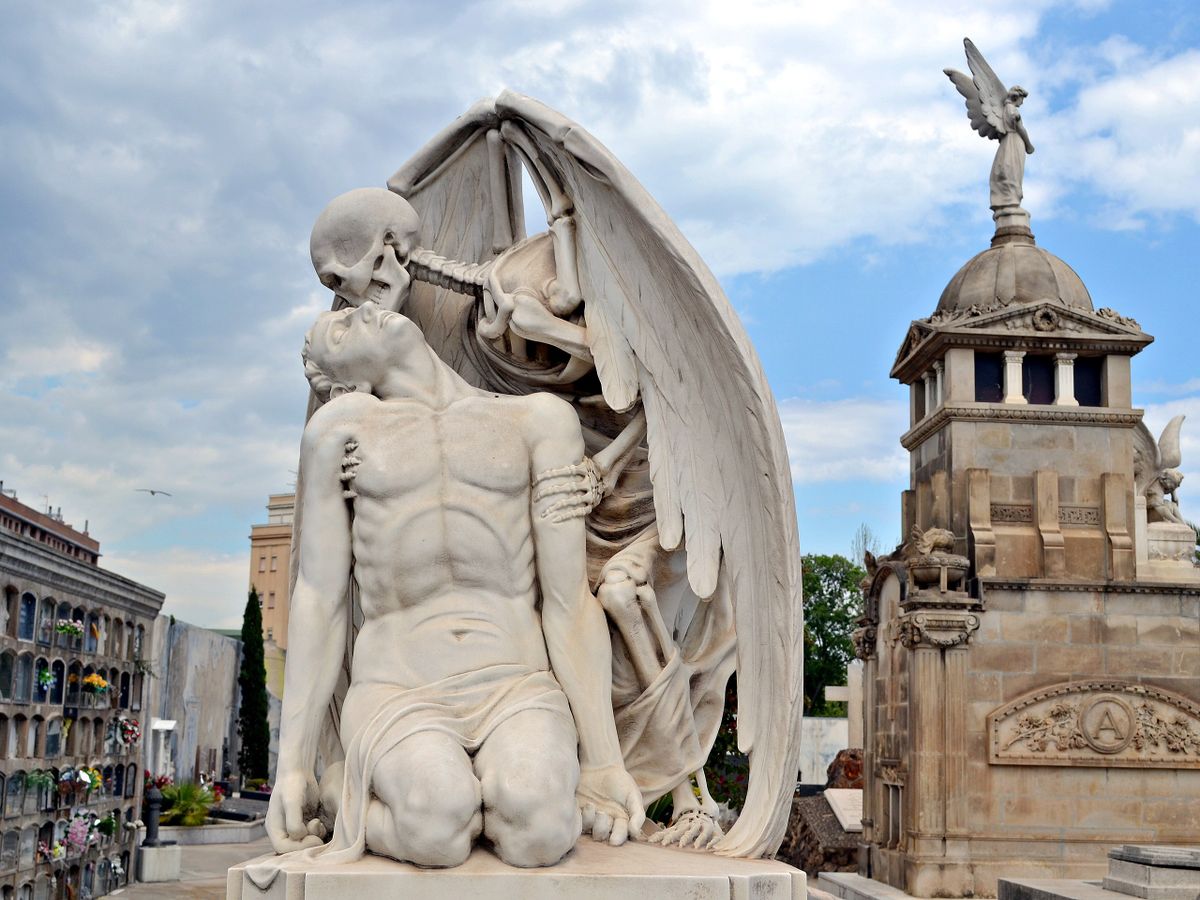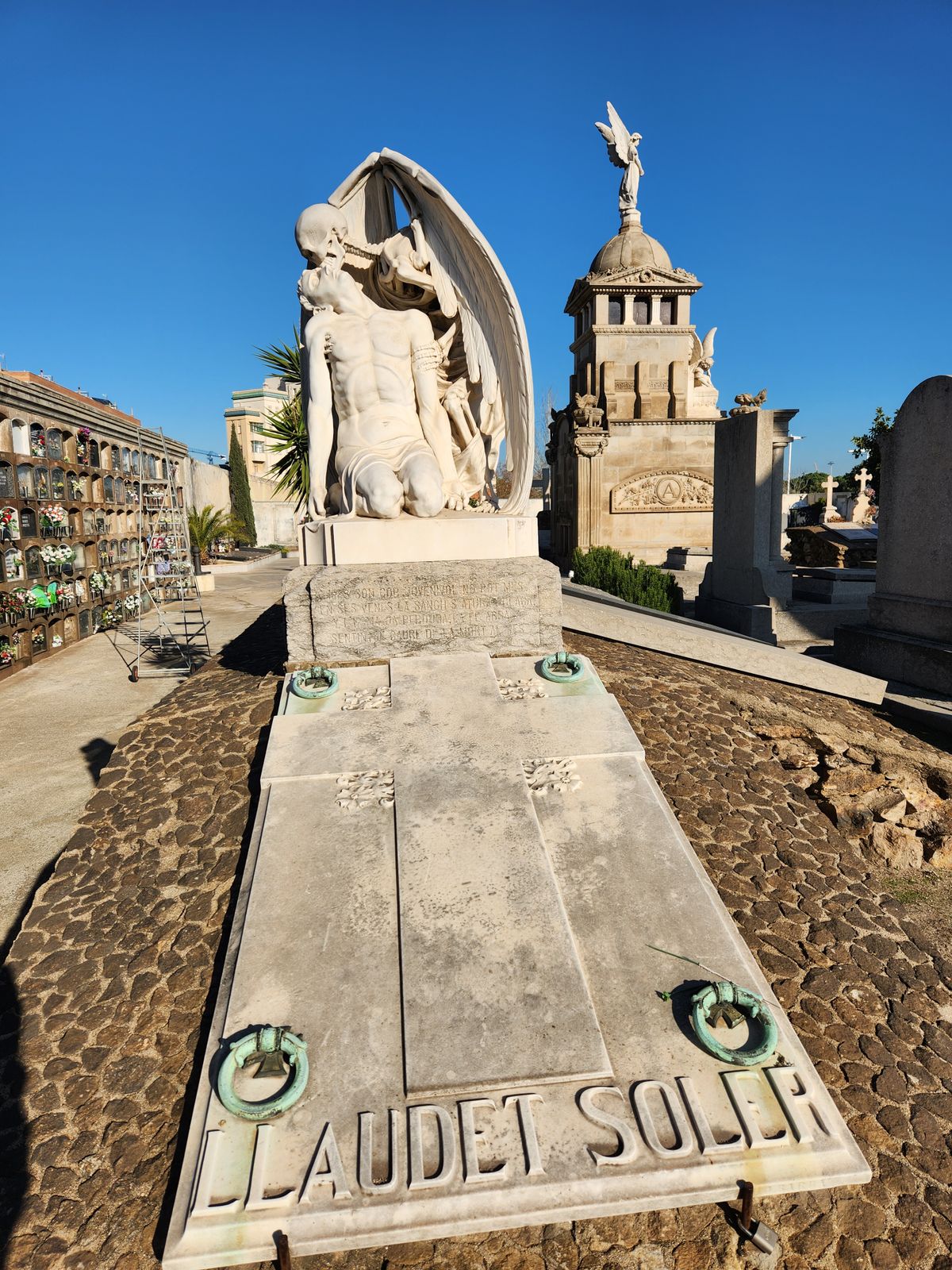About
Alongside guardian angels and other typical funerary sculptures that adorn mausoleums in Poblenou Cemetery stands a striking sculpture. This finely-detailed carving stands out for its expressiveness and sense of macabre; It depicts a winged skeleton taking the life of a young man by way of a tender kiss.
Known as el Petó de la Mort (the Kiss of Death), the sculpture was created in 1930 for the tomb of textile manufacturer Josep Llaudet Soler. The tomb is inscribed with a line verse by the Catalan poet Jacinto Verdaguer that translates to: “His young heart is thus extinguished. The blood in his veins grows cold. And all strength has gone. Faith has been extolled by his fall into the arms of death. Amen.”
The masterful sculpting on el Petó de la Mort has made it a celebrated piece of funerary art. Delicate details carved into the marble capture both soft skin and the bony fingers of death. The piece is believed to have been sculpted by Jaume Barba, the artist whose name is carved into the base of the monument, though some have attributed its design to another artist, Joan Fontbernat.
The Poblenou Cemetery, also known as Cementiri de l’Est (East Cemetery), was the first to be built outside the walls that marked the perimeter of medieval Barcelona. A cemetery was first built at this location in 1775, but the original cemetery was destroyed by Napoleon's troops in 1813. Soon after, the Italian architect Antonio Ginesi was commissioned to create a new design, which was consecrated in 1819. The cemetery has three sections: terraced burial niches at the front, individual monuments and mausoleums at the rear, and a narrow section along the south wall with more niches and common graves.
Though many come to Poblenou Cemetery to see Petó de la Mort and other lavish monuments, one of the cemetery's most popular residents can be found among the modest niches. Francesc Canals i Ambrós died in 1899 at the age of 22. During his short life, many believed that he had the ability to see the future—he even predicted his own early death. Some said that if you visited his grave and made a wish for love or health, it would come true. Francesc became known as the Saint of Poblenou. More than a century later, the supernatural story persists. Francesc's grave and the niches that surround are often filled with flowers, candles, votive offerings, and more.
Related Tags
Community Contributors
Added By
Edited By
Published
November 9, 2021
Updated
January 26, 2023





















































